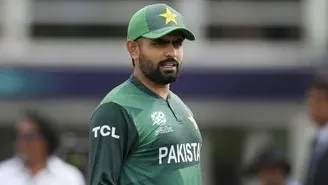
As Pakistan prepares for their upcoming ODI series against West Indies from August 8 to 12, the spotlight turns to the squad’s evolving dynamics. The absence of Fakhar Zaman due to a hamstring injury and the continued T20I omission of Babar Azam forces the team to reconsider its top-order structure. Meanwhile, the inclusion of the young and promising Hasan Nawaz signals a possible shift toward bold experimentation.
Fakhar’s injury is more than a personnel loss—it alters the fundamental makeup of Pakistan’s approach in the powerplay. His ability to attack from ball one, dominate bowlers with his unconventional strokeplay, and create pressure through fearless intent made him a fixture in the side. His absence will be felt most when Pakistan attempts to set or chase brisk targets. The team must now look to alternatives such as Imam-ul-Haq or Abdullah Shafique to bring stability, while Saim Ayub, if fully fit, may be tasked with injecting early aggression.
At the same time, Babar Azam’s return to the ODI squad—but not to the T20Is—has raised eyebrows. Once Pakistan’s all-format anchor, Babar’s role is under scrutiny due to recent critiques about his strike rate in white-ball formats. Still, in ODIs, his composure and consistency remain invaluable, especially in the middle overs where innings can either stall or accelerate. Pakistan is likely to slot him in at No. 3 or 4, where he can act as the backbone around whom the younger batters can bat more freely. His presence could provide balance, assuming he adapts to the evolving pace and demands of modern ODI cricket.
Into this mix comes Hasan Nawaz—uncapped, aggressive, and raw. His call-up marks a clear intention from the selectors: they are willing to invest in future firepower. Hasan has shown glimpses of brilliance in domestic and franchise cricket, notably with his fearless hitting. However, ODIs require more nuance than T20s, and how well he handles this transition remains to be seen. If he is handed a debut, Pakistan might use him either as an opener to mimic Fakhar’s role or in the middle order as a disruptor during the final 20 overs.
From a tactical standpoint, the absence of Fakhar and the experimental edge of including Hasan will put pressure on the more experienced core. Mohammad Rizwan, now a senior figure, will be expected to guide the innings and possibly captain the side depending on official appointments. The bowling unit, led by Shaheen Afridi and supported by the likes of Naseem Shah and Usama Mir, remains robust—meaning the main questions lie in the batting unit’s adaptability.
Ultimately, this ODI series is not just about results—it’s about testing combinations. If Babar finds form and leads from the front, and Hasan Nawaz settles into international cricket, Pakistan could emerge from this series with a stronger, deeper squad. But if early collapses and inconsistent middle-order performances persist, the cracks left by Fakhar’s injury may widen. The next week will tell whether this transitional squad can hold under pressure—or if new heroes must rise faster than expected.

